Text © World of Showjumping
Following the FEI General Assembly in Abu Dhabi (UAE) on 13 November 2024, the updated FEI Rules and Regulations for 2025 are now available online. Changes include modifications to the FEI General Regulations and the FEI Veterinary Regulations, while the FEI Jumping Rules – scheduled for full revision in 2025 – have only been subject to a few minor changes. Meanwhile, as per the FEI Rules Revision Policy, the Equine Anti-Doping and Controlled Medication Regulations underwent a full revision this year with major updates for 2025.
FEI General Regulations
The changes to the FEI General Regulations include modifications to article 106 – Application for and Allocation of FEI-Named Events – which now grants the FEI Board the opportunity to allocate FEI named events to the same organiser on a multi-edition/year basis.
Modifications to article 142 – Abuse of Horses – redefine the responsibility to report horse abuse with the new FEI Horse Abuse Reporting Form, which is available on the FEI website. Article 142 now reads as follows: “Any person witnessing an Abuse must report it without delay. If an Abuse is witnessed during or in direct connection with an Event, it should be reported as a Protest (Article 161) to an Official. If the Abuse is witnessed at any other time it should be reported to the FEI through the FEI Horse Abuse Reporting Form available on inside.fei.org. Following a review of the report, the FEI shall take a Decision as to whether or not to open disciplinary proceedings (either through the Administrative Disciplinary Procedure or by referring the matter to the FEI Tribunal).”
While fraudulent conduct has been added as a reason to disqualify under article 164.5, the list of offences that the FEI may sanction under article 164.11 has been detailed further for 2025. Among these offences is now any conduct that is contrary to the integrity of equestrian sport or that risks bringing the FEI and/or equestrian sport into disrepute or that risks causing the public opinion of the FEI and/or equestrian sport to be diminished, as well as breaches of the FEI Social Media Policy.
The table of sanctions in article 164.12 has been updated accordingly, with violations of the FEI Social Media Policy resulting in sanctions such as warning cards, yellow warning cards, fines, disqualification, as well as suspensions, within a range of 3 months to 3 to 5 years, while breaches of the FEI Code of Ethics, the FEI Code of Conduct on the Welfare of the Horse, as well as bringing the FEI and/or equestrian sport into disrepute can all lead to a maximum sanctions of up to life.
The FEI General Regulations Appendix A – Definitions – has been updated with a more detailed definition of incorrect behaviour.
FEI Jumping Rules
As the FEI Jumping Rules will go through a full revision next year, only minor updates have been added, including modification to article 257 – Saddlery – regarding noseband tightness: “Art. 1044.8 of the Veterinary Regulations applies in relation to the permitted tightness of the noseband.”
FEI Veterinary Regulations
The updated FEI Veterinary Regulations include multiple major changes for 2025.
Article 1002 – Vaccinations and Infectious Diseases – now details how, as of 1 February 2025, equine influenza vaccinations must also be recorded in the FEI HorseApp. Additionally, the equine influenza vaccination requirements have changed.
Removing or shortening the hairs in the auricles of the horse is as of next year considered a prohibited method under article 1004, while article 1026 – Prevention of Infectious Disease Transmission – now grants the FEI the possibility to impose a pre-event quarantine and/or require testing for infectious diseases in certain cases.
Article 1035 – Presentation of Horses – has been modified to regulate how horses competing without shoes must be presented at the horse inspection, while a failure to comply with the requirements will lead to the horse not being accepted to compete.
Article 1044 – Bandages and Tack – details the much-debated noseband tightness and the device which will be used to measure it:
“Effective 1 May 2025, the following provisions apply regarding the Noseband Tightness: The noseband must be adjusted with sufficient laxity, as determined by an FEI approved Measuring Device. The rule applies to all types of nosebands and to both the upper and lower noseband. The detailed protocol for measuring the tightness of noseband(s) is provided for in the (Discipline specific) Noseband Tightness Measuring Protocol(s). Excessively tightened noseband(s), as determined by an FEI approved Measuring Device, shall incur the following consequences: Pre-Competition: The Horse and the Athlete combination is not allowed to start unless the noseband is re-adjusted to allow enough laxity. During the Competition: The Horse and Athlete combination is eliminated from the Competition in question and the Athlete is issued with a Yellow Warning Card.”
In article 1045 – Examination of Horses – the scope of the examination has been increased to cover any part of the horse’s body, including checking for the presence of blood.
Changes have also been made to article 1054 – Same-Day Treatment. Injections or infusions with any substance not listed on the EPSL prior to the competition on the day is prohibited, as are any non-emergency treatments when the FEI Stables Area is closed.
The injection or infusion of vitamins and/or minerals during an event has been added to article 1061 – Prohibited Treatments – while in case of an emergency, their use is to be supported using the Veterinary Form A.
Equine Anti-Doping and Controlled Medication Regulations
This year, the Equine Anti-Doping and Controlled Medication Regulations went through a full revision as per the FEI Rules Revision Policy.
As per article 2 – EAD Rule Violations – an adverse analytical finding can now be established not only by a positive blood or urine sample, but by any biological or other material, including tissue, body fluid, excreta, hair, skin scraping or swab.
Additionally, a combination of three failures in filing horse whereabouts within a twelve-month period will amount to an EAD rule violation.
Article 5 – Testing – is updated to include how the FEI shall be entitled to request information regarding horses’ whereabouts in order to conduct out-of-competition testing.
In out-of-competition testing, the finding of a banned substance will lead to a provisional suspension of the horse for a two-month period, which can be increased in case of aggravating or exceptional circumstances. The FEI may also suspend a person in certain cases. The Out-of-Competition Protocol can be found in Appendix 2.
The notification system for specific cases and other EAD rule violations has been updated as well, and a special procedure for minors has been included.
2.12.2024 No reproduction of any of the content in this article will be accepted without a written permission, all rights reserved © World of Showjumping.com. If copyright violations occur, a penalty fee will apply.









